Plastic waste is at the centre of the sustainability debate because we can all see and recognise it easily. Despite being just one part of the puzzle, plastic waste is much more visible than CO2 emissions or the 1.3 billion tonnes of food that goes to waste every year worldwide.
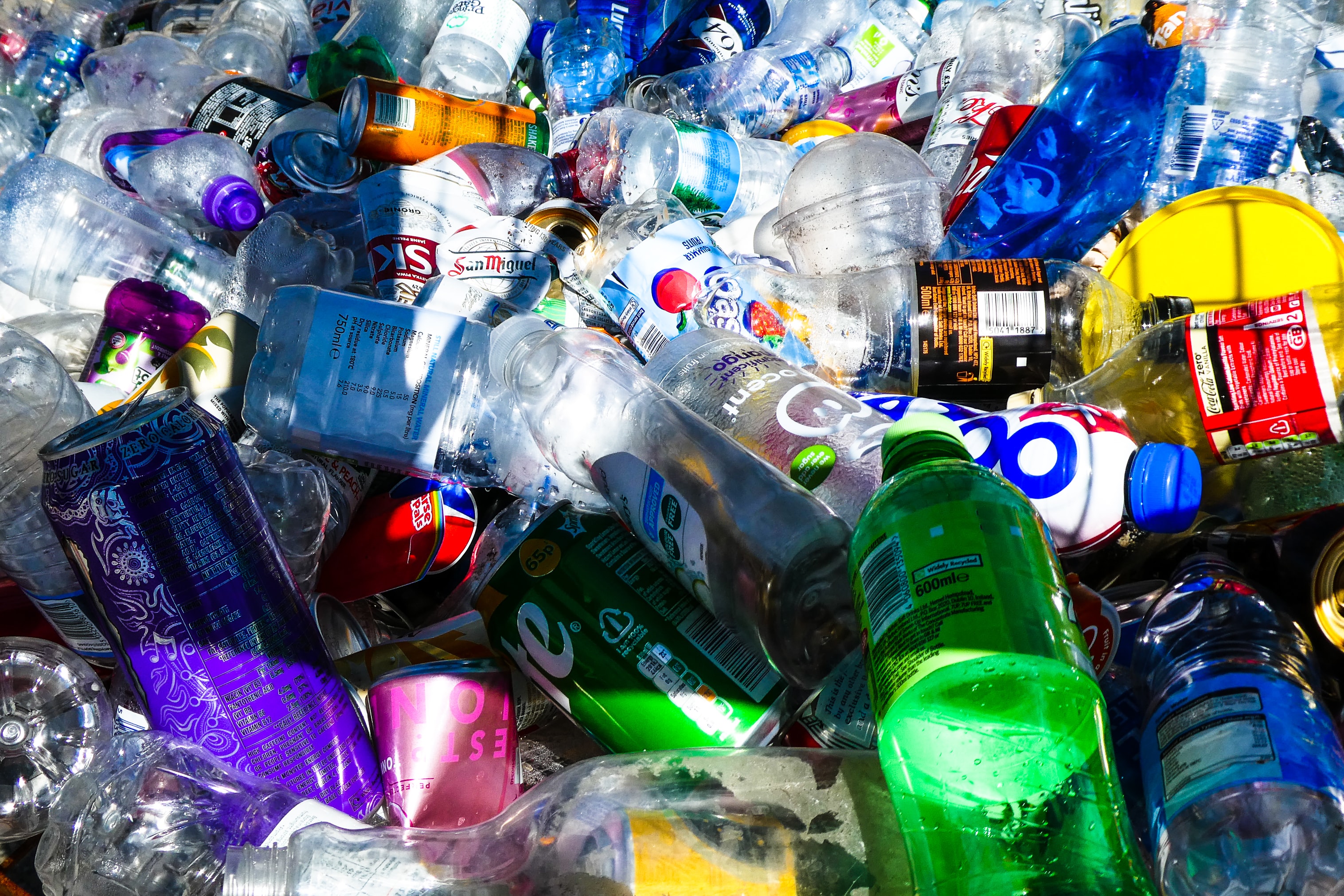
Frequent littering and an onslaught of social media campaigns have contributed to a growing narrative that plastic is a huge environmental problem. Amid genuine attempts to help the planet, there are just as many campaigns which trivialise and oversimplify the issue, or worse yet, spread misinformation for more website clicks and donations.
Plastic packaging is certainly considered a villain by mainstream media, government, and consumers, but what exactly are the facts?
Fact 1: Plastics have a smaller lifetime carbon footprint than paper and glass
As climate change is such a large concern, we need to consider how much energy it takes to produce each type of material. Lifecycle analyses (LCAs) are the best measure of this, and multiple studies have demonstrated that plastic is overall less harmful to the planet than the use of other ‘sustainable’ materials.
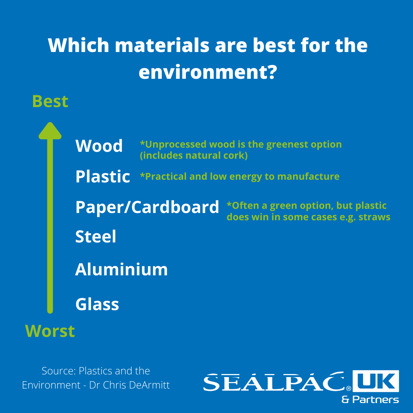 Lifecycle analysis is the best method to assess how sustainable or ‘green’ a material is, as LCAs take into consideration the entire process of manufacturing, use, and disposal. This includes the extraction of raw materials, the energy and facilities it takes to manufacture the finished product, how these products are packaged and transported, the functionality of these products, any repairs/maintenance (how easy/green they are) and the recycling/waste disposal process.
Lifecycle analysis is the best method to assess how sustainable or ‘green’ a material is, as LCAs take into consideration the entire process of manufacturing, use, and disposal. This includes the extraction of raw materials, the energy and facilities it takes to manufacture the finished product, how these products are packaged and transported, the functionality of these products, any repairs/maintenance (how easy/green they are) and the recycling/waste disposal process.
All of these things are important in determining how effective different materials are for particular jobs, as well as how much an impact using them has on the environment. Contrary to popular belief, plastics rank fairly well in LCAs, having a smaller carbon footprint than paper/cardboard, steel, aluminium and glass materials.
If we were to replace plastic bags with paper ones, this would require 2.7 times more energy and 17 times more water to manufacture the paper bags, and this would produce 1.6 times more CO2. To do this for Europe, this would require 2.2 million more trees to be cut down per year and 60,000 Olympic swimming pools worth of water for the manufacturing process.
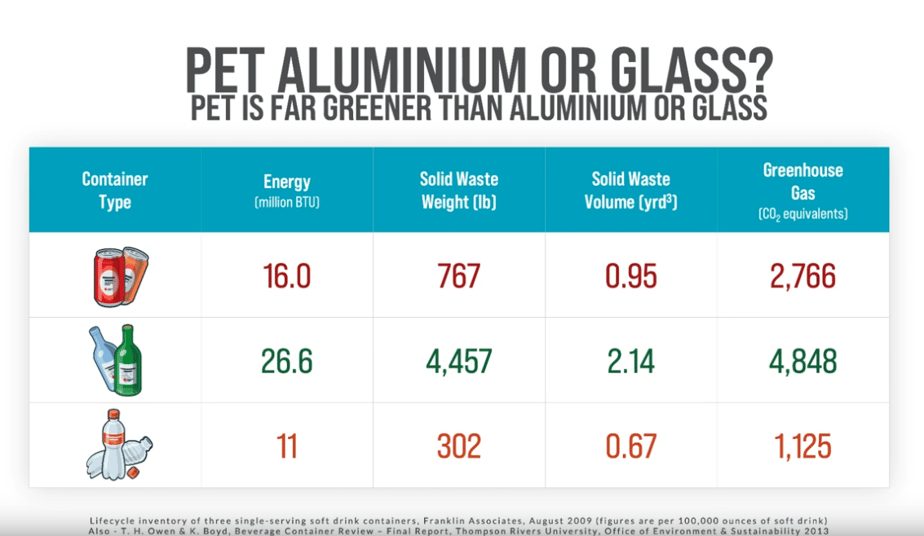
Source: 'Plastics and the Environment: Facts for a Brighter Future', Dr Chris DeArmitt
Fact 2: Plastics only make up around 10% of Solid Municipal Waste in the UK
Despite plastic gaining the most media attention, plastic waste is a small proportion of our household waste. Plastics make up around 13% of solid municipal waste (SMW), with paper (25%) and food waste (15%) being a higher part of household waste.
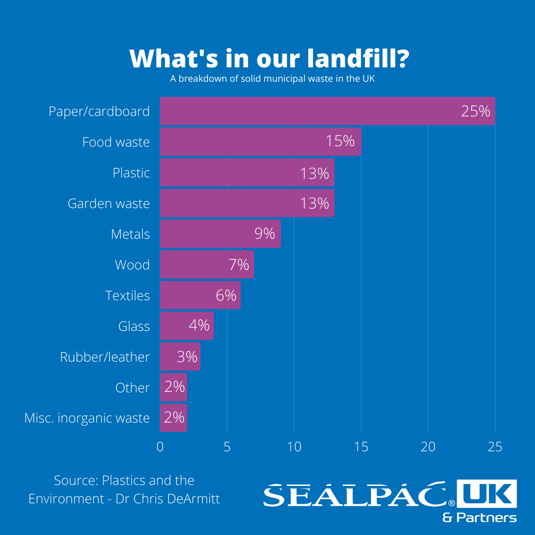 In fact, a lot of waste in landfill is often just building rubble – it’s estimated that both paper and rubble account for about 50% of SMW, whereas plastic averages at around the 10% mark across the UK.
In fact, a lot of waste in landfill is often just building rubble – it’s estimated that both paper and rubble account for about 50% of SMW, whereas plastic averages at around the 10% mark across the UK.
We are also producing much less waste per person because of plastics. Between 1960-2013, our use of plastic increased by 84 times, but the amount of SMW we produce has only increased by 2.9 times. The amount of waste per person steadily increased between 1960-1990, but has plateaued since then.
So why is plastic seen as such a huge problem?
The simple answer is that we see plastic bottles and packets littered around us almost everywhere we go. However, litter is very much a human problem and is not specific to plastic packaging, but rather is indicative of human behaviour towards waste disposal.
A study in the US found that 81% of litter that was dropped was dropped intentionally, which goes to show that whether we switch to paper packaging or stick with plastic, single use items are still likely to be left wherever people go.
Fact 3: The UK is NOT a huge plastic polluter
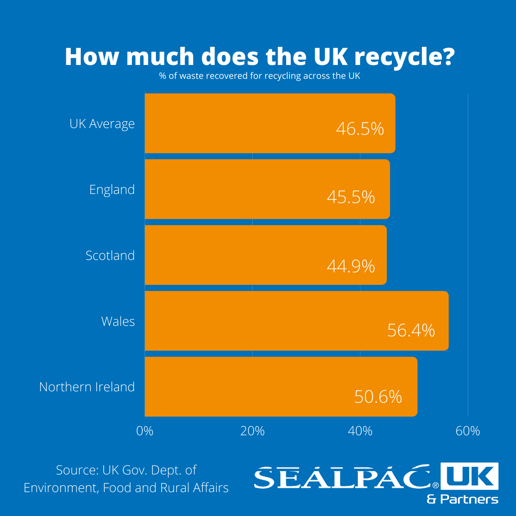 Environmental reports often focus on how much waste each country produces, but does not take into account how this waste is processed and dealt with. It doesn't necessarily follow that the total plastic waste a country produces directly correlates with the quantity of plastics which are polluting waterways, rivers and oceans, as this doesn't consider how each country deals with their waste.
Environmental reports often focus on how much waste each country produces, but does not take into account how this waste is processed and dealt with. It doesn't necessarily follow that the total plastic waste a country produces directly correlates with the quantity of plastics which are polluting waterways, rivers and oceans, as this doesn't consider how each country deals with their waste.
Higher income countries, such as the UK and the US, typically have well-managed waste streams. The UK and the US in particular may produce more waste than other countries, but this waste is managed better, with higher rates of recycling and lower rates of river and ocean pollution.
However, the recycling and disposal of plastic is often mismanaged. The UK is one of the more successful countries when it comes to recycling, but more does need to be done. In 2019, 46.5% of waste was ‘recovered’ for recycling, and provisional figures for 2020 also show that 67.2% of packaging waste was either recovered/recycled. Wales is currently ranked the third best country at recycling in the world, and the Welsh Government are continuing their plans to implement a complete circular economy.
Fact 4: Plastic waste in the ocean is closely monitored
We’ve all seen the images of plastic bags and PET bottles floating in the ocean next to tropical fish and the occasional turtle, which have led us to believe that the ocean is swimming in masses of plastic. Some sources have even claimed that there are huge islands of plastic bobbing around on the surface in some areas – one such plastic island is said to be the size of Texas.
However, the amount of plastic in the ocean has been regularly monitored for decades, and the results of this monitoring show that plastic islands are pure myth. There is currently less than 500g of plastic per km2 (2lb2 per mile) in the ocean today. Even in the worst parts, this is about one game die of plastic per Olympic swimming pool.
And even then, this plastic is not detectable by swimming or sailing through it, as most of this plastic is in micro-plastic form.
Fact 5: Many studies into the effect of microplastics on marine life use the wrong types of plastic
Most of the plastic in the ocean has been broken down into micro-plastics, which we’ve heard are harmful for marine wildlife. However, the majority of the studies which look into the harmfulness of plastics in an ocean habitat do not produce reliable results because the people conducting these studies often have a vested interest in proving that micro-plastics do cause harm.
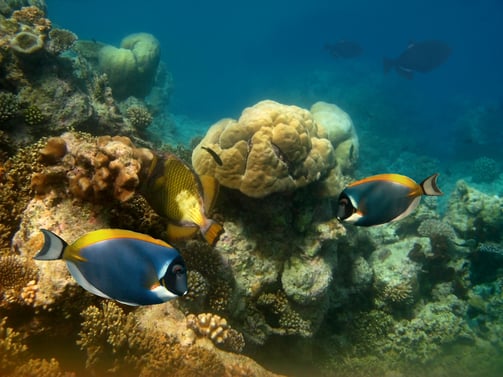 These studies often use X-linked polystyrene particles instead of the PE and PP micro-plastics which are actually found in the ocean. These polystyrene particles have different properties, which skew the results:
These studies often use X-linked polystyrene particles instead of the PE and PP micro-plastics which are actually found in the ocean. These polystyrene particles have different properties, which skew the results:
-
- Polystyrene particles are much smaller and have a higher surface area
- Polystyrene particles are often chemically modified with amines, and the X-linked polystyrene which is often used for these kinds of studies, contains divinyl benzene which is toxic
- Lab synthesized polystyrene particles are often fluorescent and coloured green or red for biology experiments
As well as this, a number of these studies used a 100-10 million times higher concentration of particles than the concentration of micro-plastics actually found in the ocean.
Studies which actually use PE and PP plastics show very different results; namely that these plastics aren’t harmful to sea creatures. Polyethylene and polypropylene are both food-safe materials as we use them to make Ziploc bags and Tupperware containers. PE & PP micro-plastics are actually no more dangerous than eating food from a Tupperware pot.
The ocean is full of toxins already, and the presence of plastic doesn’t contribute to this. In fact, micro-plastics have been found to absorb these toxins which protects fish, and even if this plastic is then ingested, it passes through marine wildlife with little to no harm at all.
Fact 6: Plastic does not take 500 years to degrade
How long does a plastic bag take to degrade? Not 500 years. Although it’s commonly believed that plastics take a long time to break down once in landfill, plastic degradation is at a similar rate to paper and other organic materials.
Paper and plastic both degrade in soil in about 1-3 years. Plastic’s bad reputation for not breaking down in landfill is a false perception, as all materials degrade less quickly in landfill. Landfill sites are designed to be without oxygen, but oxygen is necessary for materials to break down. This means that paper and food waste doesn’t decay in the normal way either. In recent years, previous landfill sites have been unearthed, and paper products hadn’t broken down either. In fact, a newspaper from 50 years ago was still legible!
